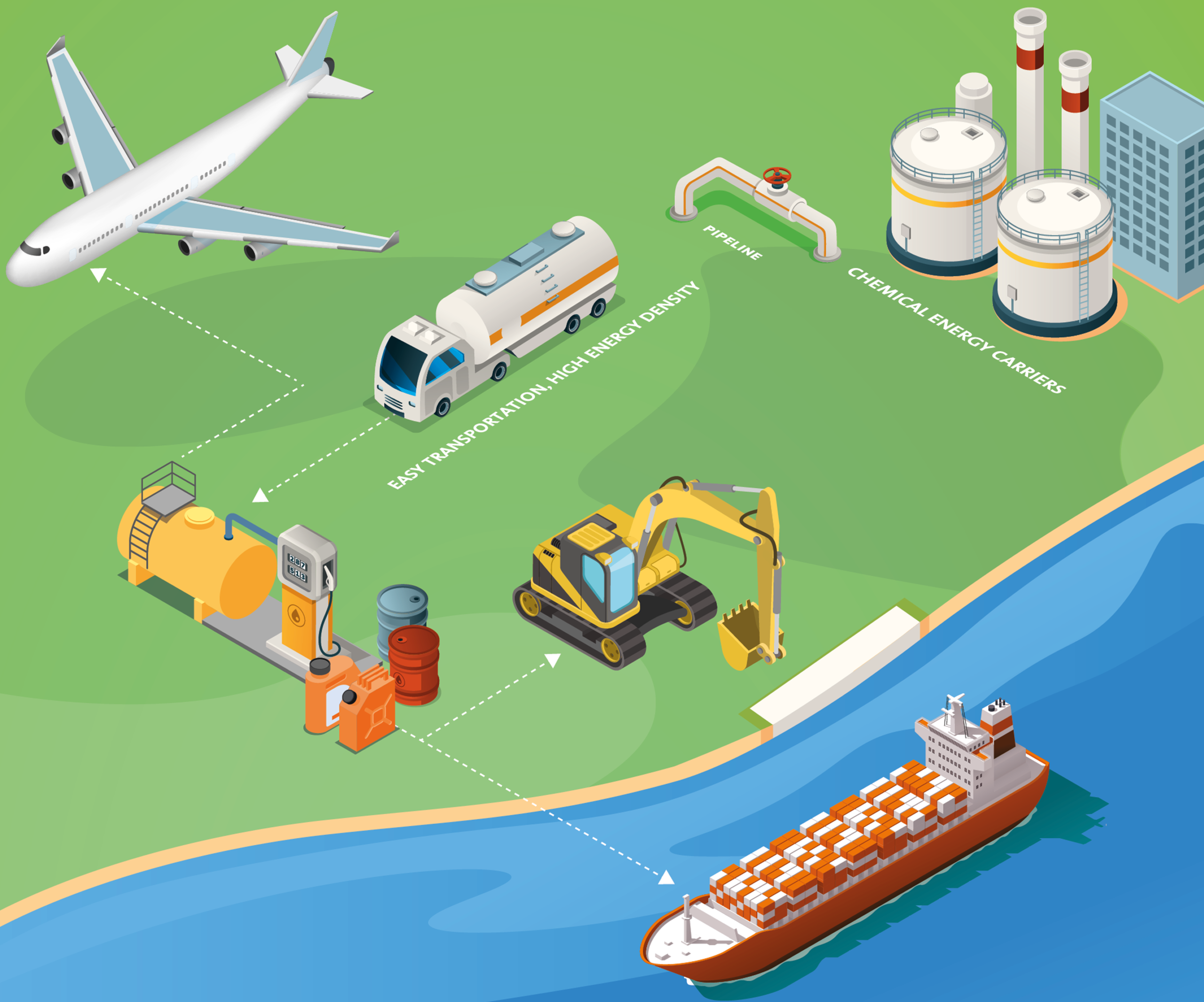Chemical energy carriers are easy to store and transport using existing infrastructure. They alone can provide the required energy density in numerous applications.
In chemical energy carriers, energy is stored in the form of chemical bonds. The compounds can be either liquid or gaseous. When needed, the energy can be released again through chemical reactions.
A key advantage of chemical energy carriers is their high energy density: it has a decisive influence on the range that can be achieved when there is limited space for tanks in mobile devices and vehicles. This high energy density is of outstanding importance, for example, in the transportation of goods on the high seas, where thousands of nautical miles must be covered at a stretch. Direct electrification, which is a possibility for individual transport on land, therefore only works to a limited extent for shipping, for example in coastal applications such as ferries. However, supertankers or container giants are unlikely to ever sail the seas on battery power alone; the payload of the ships would largely be consumed by the necessary battery size. What is needed here is a greater energy density, such as can be provided by chemical energy sources.
In addition, the use of chemical energy sources has long been established and practiced, and the necessary infrastructure is in place. Crude oil, for example, is usually transported by ship or pipeline from the extraction sites to refineries. The products manufactured there, such as gasoline and diesel, are then in turn transported by ship or pipeline, rail, or tanker truck to distribution points and finally to the end consumer. Gas is usually distributed via corresponding pipelines. In other words, the infrastructure for storing, transporting, and distributing chemical energy sources is very well developed. If technologies are evaluated on the basis of a life cycle analysis, the existence of the infrastructure is an invaluable advantage of chemical energy sources, because there is no need for energy- and resource-intensive new construction. However, as far as the greenhouse gas balance is concerned, chemical energy sources have many disadvantages. Thanks to the infrastructure already in place, however, chemical energy sources of fossil origin could quickly be replaced by CO2-neutral alternatives. Our next mission will show how this can be done.
More information on the topic here (Frontier economics study)


